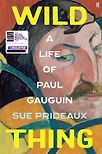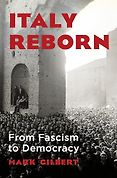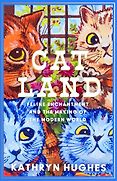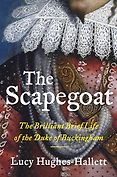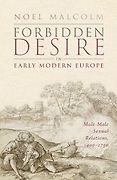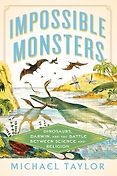Before we get to the books, could you give an introduction to what the Pol Roger Duff Cooper prize is? It’s a prize for nonfiction books, but could you be more specific about what it is you’re looking for as judges?
I think there is perhaps an unusually close relationship between the concept of the prize and the memory of its namesake, the writer and politician Duff Cooper, who was both human and humane, a larger than life and legendary figure: best known, perhaps for resigning from the Cabinet over Munich in 1938 and then as the first British ambassador to liberated Paris in 1944. There are so many funny stories about Duff and his wife, Lady Diana, who were part of that wonderful Evelyn Waugh, Nancy Mitford world. The fact that we now have as our sponsor Pol Roger champagne increases that vibe (to use a word Duff & co wouldn’t have recognized).
I suppose lurking at the back of my mind as to what the prize is looking for is the idea of Duff’s great biography of Talleyrand. It exemplifies the kind of book that we all collectively enjoy and seek: the wit, the unexpectedness, the substance and the prose.
So this is a very long established and entertainingly pedigreed prize, looking for everything that matters to our panel. We don’t try and compromise and seek only some of the ideal literary virtues at the expense of others. We want style, rigour, argument, meatiness, readability, freshness, oddity and individuality.
Let’s go through the books that made the 2025 shortlist. First up is Italy Reborn: From Fascism to Democracy by Mark Gilbert. Tell me what it’s about and what you value in it.
Though this is undoubtedly an important academic work, it doesn’t necessarily read like one. That is quite an achievement, given that it’s dealing with very dense material. Encompassing the various acronyms coming out of the post-war Italian left, distinguishing between them and conveying their shades of pink to the general reader, is a definite challenge. But Mark Gilbert really rises to it.
He starts with a very lucid, clear, surprising, and counter-intuitive argument, and sticks to it throughout. Though his case pounds along with sustained force, it is never dull or repetitive or anything other than keenly coherent. Reading Italy Reborn is not like being stuck with an obsessive or a preacher. Rather this is an ideal tutorial, a lesson very well and entertainingly taught. I found it explained so much that I personally had never quite got to grips with about Italy before.
For example, I had always thought, ‘Well, didn’t the king get rid of Mussolini in the end? So why were the Italians then so eager to get rid of the king?’ In this book, we see the complexity and depth of the nightmare that Italy endured during the war, and we see how mixed up in it all the house of Savoy was—rather as we’re recently coming to learn about the Hohenzollerns and the Nazis. I now understand why there was no question, even on the centre right, of the royal house staying around.
The other great aspect of this book is the quiet emergence of an unexpected hero. He’s this very sedentary, intellectual, subtle figure, a Catholic centrist, Alcide De Gasperi, whom I knew absolutely nothing about coming into the book. He’s in that fascinating category of heroes through compromise. As I’ve just written a book, Friends in Youth, about political compromise in the 17th century, I was particularly drawn to this. Mark Gilbert traces the implementation in Italy of ideals that I had been writing about and that I admire, but that, sadly, it often seems you more usually see fail than succeed. But De Gasperi somehow pulled it off.
Italy Reborn also reminded me of a book that I love by Javier Cercas, The Anatomy of a Moment, about the aftermath of Franco in Spain. Again, it’s about the ability of heroes of liberalism to compromise, to come through sordid, tainting times in a very complex human, grown-up, difficult way.
It’s very contorted material, but it very seldom feels like that. It’s very human and surprisingly often even funny. It’s a great book.
What’s the argument he’s making?
Simply that Italy was well designed in the aftermath of the Second World War, and holds up relatively well as a democratic state. That’s at odds with its reputation in the Anglophone world as a bit of a basket case. In this moment of nemesis for said Anglophone world, where our institutions are not looking so Whiggishly shiny as all that, it feels particularly apt and well put as a case.
Let’s go on to the next book, which is Catland by Kathryn Hughes. Tell me more.
Catland is absolutely charming. I hesitate that to use that word famously condemned by Anthony Blanche in Brideshead Revisited (“Charm is the great English blight”) but it is. It’s winning, it’s witty. Kathryn Hughes’s tone is colloquial, friendly, amusing, arch, conspiratorial. Using this very intimate perspective, she inveigles you into quite a big idea, the process by which the domestic cat evolved from being a by-word for incestuous verminkind—hardly better than the mouse it hunted—to being both a member of the family, a loved relation, and also a high-status possession.
That’s a big story, but she also tells it through a more microcosmic, human mini-biography of Louis Wain, an artist with a very particular, eccentric angle on art and on life. I think this tactic, of the slender within the wide, works very well. It worked, for example, with H is for Hawk, Helen Macdonald’s wonderful work about falconry and T. H. White and her grief for her late father all at the same time.
The way Kathryn Hughes has delivered Louis Wain—his deception, including self-deception, his eccentricities, his surprisingly sharp family, his increasingly untidy life, his financial naivete, increasingly his mental decline, which leads to a final, very unexpected, avant-garde artistic redemption—all within this extraordinary world of capitalism and enterprise, snobbery and aesthetics taking off around cat-fancying, is a remarkable cocktail which really seduced us all.
As an artist, was Wain doing pictures of cats?
Yes, he was a comical, worldly cat cartoonist. Or that’s what he turned into after a fairly short apprenticeship, dabbling with a few religious and decorative themes. He really found himself drawing cats who were, for instance, absentee fathers, getting away from all their kittens in order to go for a night’s gambling in Soho, sort of Edwardian bounders escaping from their nagging queens.
Next on the list we have The Scapegoat by Lucy Hughes-Hallett, which is about the Duke of Buckingham. For those reading this who aren’t as familiar with English history, it might be worth saying who he was.
The Duke of Buckingham was the great favorite of King James I of England (and VI of Scotland), the king who came down from north of the border and took over in England. James seems to have been, on the whole, attracted to men rather than women. He had a very difficult childhood, and one of the only human beings he trusted and loved growing up was his glamorous cousin Esmé Stewart. Esmé Stewart was the first of many handsome young men who culminated with Buckingham.
Buckingham was not only the most staggeringly glamorous man of the lot—he was said to have won the heart of the queen of France as well, and features in The Three Musketeers—but also, to an even greater extent than any of the previous favorites, he amassed real executive power because of the level of captivation that he exerted.
Partly because things didn’t turn out very well for Buckingham—whether through incompetence or bad luck or a bit of both—he’s tended to have a very negative reputation in British historiography. He’s viewed as a corrupt, evil counsellor, a wicked and depraved man who led the king astray.
What Lucy Hughes-Hallett locates is why the king loved him, and what made him such an affectionate and personable friend. He was a genuinely decent man, in many ways. His wife loved him, and he was the product of a warm, cultivated, feminized family, harmoniously united to his mother and sisters. There’s his sheer charm (that word again!), his ability to behave well a lot of the time. When you’re first getting into this book, it’s reminiscent of, say, Antonia Fraser’s relationship to Charles II in her biography, which, at times, feels very close. Lucy Hughes-Hallett has this sympathy for King James and for Buckingham and their friendship. She’s very openly, honestly drawn to them.
That makes her all the more devastatingly able to see where they and their policy went hopelessly wrong, headlong into delusion and disaster. I’ve been more convinced by her account of the situation than by any other. So often previous historians have had some kind of axe to grind—they hate Buckingham, they hate Catholics, they hate King James, they have a complex about Scotland. Perhaps we can ignore everything they say. Maybe Buckingham wasn’t as bad as all that.
But because I can trust that Lucy Hughes-Hallett really does see everything good that’s going for Buckingham and for King James, she’s all the more able to get across why and how, despite often very attractive intentions, their policy was doomed from the outset.
She’s also exceptional at materialising the world in which they lived. She does this partly by means of very brief, formally experimental chapters, for example lists of Buckingham’s houses or discussions of his paintings and other possessions. At one point, she has a hilarious, all too timely short chapter on how not to conduct a diplomatic negotiation. A previous winner of the Duff Cooper Prize, she is the wielder of a very beautiful, personal, confident style.
You mentioned that it ends badly, dare I ask what happened to Buckingham?
He was assassinated. He was a man so loved by the king and so hated by the public at large that his doctor, who was guilty of a terrible sexual crime, was lynched in the street.
Eventually the assassin’s knife came for Buckingham himself. The murderer was a depressive officer passed over for promotion, prone to religiously and politically charged melancholy, with anti-Buckingham material emanating from the last Parliament sewn into his hat. He stabbed Buckingham to death with a very cheap knife, and he was hailed by at least half the country as a national hero. His execution led to outrage. So, yes, a very dramatic assassination.
Now we’re at Forbidden Desire by Noel Malcolm, which is about male-to-male sexual relations in early modern Europe.
Noel Malcolm slaughters so many herds of sacred cows in an unsentimental, granitic, beautifully assembled mosaic of evidence. He is at odds—not deliberately but simply empirically—with, as he states, the whole consensus on the history of sexuality. He regards homosexuality in its modern form not as having emerged in the late 17th, early 18th century—which apparently, to me very surprisingly, is the established view among historians of sexuality—but instead being a much more constant, though perhaps rather subterranean, current.
He identifies and explains geographical differences between the Mediterranean and southern areas of Europe on the one hand, and northern Europe on the other. He never comes to conclusions first and then builds the why and how upon them, he simply assembles all the evidence he can find and proceeds with great care upon its basis. And while that evidence is of course extremely patchy and varied, there is a lot of it, if you are as good at searching as he is. He constructs these huge hecatombs of anecdotes, of deductions from absence, of judicial statistics, of inference, of literary sources, of gossip.
He’s also extremely skeptical, absolutely refusing to write a whole chapter on the strength of a Marlowe poem or anything like that. For instance—and I love this about having both Lucy’s book and Noel Malcolm’s on the list—he denies the sexual element between James and Buckingham. He says there’s not enough proof to go there. I absolutely love that we have endorsed one wonderful book about their full and loving relationship, and another that all but denies that relationship’s nature.
Sir Noel is both a great writer—there’s not a single sentence that falls short of very high standards of beauty—and a very conscientious, ethical, thorough historian.
And is there a particular conclusion that he comes to, an overarching argument?
As far as I could gather, he felt that there was some undeniable importance to the relative societal scarcity of women in the south of Europe. Whether you’re in the Muslim world of harems, or, say, in the Spanish world, where even in the days of the Bloomsbury group, Gerald Brenan was describing wooing veiled ladies high up in windows, women were much more cloistered. It was much more of a societal norm for a young man about town to do it with (even younger) men, because women were not very available.
Whereas in Northern Europe, where women were much more available, Sir Noel identifies a norm closer to modern homosexuality, with alternate, identifiable kinds of life going on quietly in their own way.
However, to boil his book down to such baldly stated conclusions is to do it a disservice. It is a complex book, delicately assembled upon a heroically amassed mountain of evidence. If I have misrepresented it, I hope he’ll forgive me.
Let’s move on to Wild Thing, the biography of the painter Paul Gauguin by Sue Prideaux. Tell me why you chose this one.
Sue Prideaux combines the strength of argument that I attributed to Mark Gilbert’s Italy book with the style of Lucy Hughes-Hallett’s Buckingham book. She has a clear mission from the start and like Mark Gilbert’s, it’s a rather counterintuitive one.
We have, in recent years, seen Gauguin rather monsterised. We’ve seen exhibitions with very sanctimonious captions about race and sexual exploitation and abuse of power or privilege. Venturing upon this book, I suppose my view of Gauguin was affected accordingly, tending to see him as a very great artist about whom I didn’t know a huge amount—I wouldn’t have put him in my top 10, necessarily—but who was notoriously guilty of extraordinary sexual appetite in all kinds of disreputable situations.
But what Sue Prideaux shows us instead is quite different. She begins by laying out that she’s going to un-tell that story. Then she goes right back, in a very conventional structure, to relate an extremely unconventional life: Gauguin’s revolutionary grandmother, his beautiful artist mother, his growing up in France, but feeling himself to be alienated from it, ‘a savage from Peru’. She shows the comedy of his nature and character, coupled with, often, the extraordinary sadness of the reversals and sufferings that he endured. The love he felt for his children was very deep and sincere but, ultimately, he was too financially desperate to allow them to live with him. By the time he met them for the last time, they didn’t speak each other’s language—his children could speak only Danish, of which fiendish language his grasp, never tight, had by then altogether forsaken him.
We proceed carefully towards Tahiti and the final act. When we arrive there with Gauguin, what we see is someone at odds with the stifling oppression of the French Empire, and willing, as part of this attitude, to take up a local way of living which is very strange to modern Western secular eyes. It’s an extraordinarily bold and provocative case.
It’s also beautifully illustrated. There are wonderful juxtapositions—of Gauguin’s portrait of van Gogh with van Gogh’s portrait of Gauguin. There are intelligently, understatedly captioned, huge, luscious Gauguin paintings throughout the book. It’s a very pleasant, beautiful object to handle, to touch, as much as to look at.
We’re at the final book now on the 2025 shortlist. This is Impossible Monsters by Michael Taylor.
I was immediately gripped by Impossible Monsters because he begins this book about—to use its expansive subtitle— ‘dinosaurs, Darwin and the war between science and religion’ at the perfect yet most unexpected point. Archbishop Ussher of Armagh, who was the great scholarly prelate of the 17th century before and during the time of the Civil War, constructed a chronology about when the creation of the world described in Genesis could have occurred. Michael Taylor is absolutely brilliant at describing Ussher’s extraordinary, monumental, logical thought processes, how he used Biblical evidence, reasonable deduction, sparse ancient records and everything else available to him to establish that the world was created 6,000 years ago. It’s easy to think it a silly idea now, but for Ussher and his contemporaries it was a huge, global, conceptual achievement. I think Michael Taylor shows great imagination in starting with that perspective, one that exemplifies how he approaches the whole book.
What we find here again and again is layers upon layers of paleontologists who—by our smug, complacent, presentist standards—are outdated, are themselves fossils or archaeopteryxes, intermediate beings with wings that don’t fly properly. But in their own day, they were changing the world with what they were discovering.
Like Georges Cuvier in France, they were often believers and profoundly opposed to other paleontologists, whom they regarded as heretical underminers of the civil order. Many of them were clergymen, like William Buckland. And yet that did not stop them from making startling discoveries and so contributing to the mass of knowledge upon which we still rely.
The other discovery for me at least was that gentle, still, small voice of calm, the calibre of Charles Darwin’s voice. He comes across as so modest and cautious, and filled with integrity. He was not someone who wanted to create an intellectual earthquake, just a slow, cautious seeker of the truth.
We also have another Charles, Charles Kingsley, playing an enchanting role. I did not particularly love the The Water Babies as a child, but the Kingsley you see in this book, with his glorious comparisons of dinosaurs to dragons, is highly enjoyable and a real example of how some of the most interesting literary men at the time could have a productive and affectionate relationship to the furthest frontier of the day’s scientific thought.
Is it about the huge shock for clergymen on discovering that what they believed was probably wrong?
The subtitle mentions the ‘war between science and religion’ but we also see a lot of overlap between science and religion, which rang very true to me. There were a lot of magnificent Victorian clergymen—one thinks of Mr Farebrother in Middlemarch, for instance, and his collection of insects…Back then, clergymen’s pastoral duties were relatively light. They could embark in quest of scholarly bounty with untrammelled enthusiasm (arguably, indeed, exceeding that of the modern academic).
There were also fierce arguments over what now seem perhaps rather narrow differences. So often it’s not so much science versus religion as religion and science on one side battling with another group of religious men and scientists on another. Rather as during the Crusades, you often had Crusaders allied with one Muslim prince taking on another bunch of crusaders allied to a second Muslim prince. That seems much more complex, an evolutionary tale of much greater subtlety than the one we’re perhaps used to, with Bishop Soapy Sam on one side and Thomas Huxley on the other, throwing slightly puerile insults at each other.
February 17, 2025. Updated: December 12, 2025
Five Books aims to keep its book recommendations and interviews up to date. If you are the interviewee and would like to update your choice of books (or even just what you say about them) please email us at [email protected]
Five Books interviews are expensive to produce. If you've enjoyed this interview, please support us by donating a small amount.

